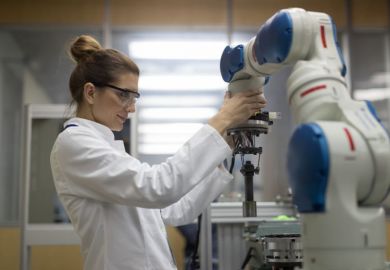Any candidate to become the UK’s next prime minister can expect to be asked how they will enable the country to flourish over the next decade.
Some have embraced research and technology in their vision. Home secretary Sajid Javid, for instance, wants to attract the world’s “best and brightest” to the UK to build “the new industries and job-creating machines of the future".
Theresa May’s existing target to double the UK’s spending on R&D over 10 years, creating a more scientifically enabled economy, driving productivity and making the UK a partner of choice among the world’s knowledge economies post-Brexit. This would represent the biggest shift in the contribution of science and innovation to the UK economy in decades.
But will this ambition stick? And can it be achieved?
I am more confident about the latter than the former. The Campaign for Science and Engineering recently published a report, Building on Scientific Strength – the Next Decade of R&D Investment, drawing on input from over 100 research-led businesses, professional institutions, universities and charities to make recommendations on precisely how the government can meet its aspiration. But Conservative leadership candidates should note that a compelling vision of a scientifically enabled economy will be needed, with a plan and a budget that attracts cross-government support and global attention.
Interestingly, the top request from businesses is the same as that from universities: to invest broadly in the academic science base through diverse funding models. That base is a draw for global money and talent. For R&D businesses, it is the primary reason to come to the UK; the case made at the boardroom table is to be close to the best science and to have access to the talent pool that generates it.
Other important measures include making R&D infrastructure and future skills an early priority. Business would also benefit from simplified access to support for innovation, the use of government procurement to adopt innovation faster, and the creation of a more internationally competitive fiscal environment, such as by updating R&D tax credits.
To address the trickier issue of stickiness, we need to address the “why” question. In an era of pressure on public services, why would government choose to invest billions to boost research and innovation?
Modelling by CaSE shows that meeting May’s target of increasing R&D investment from 1.7 to 2.4 per cent of GDP by 2027 would require roughly doubling R&D spending from £35 billion to £65 billion a year over 10 years. To reach the longer-term goal of 3 per cent of GDP by 2034, an annual £95 billion would be needed. With a spending review due, note that to keep on this trajectory the £7 billion additional public investment committed for the 2016-20 period would need to treble to £20 billion between 2020 and 2024.
So will a new prime minister back this agenda? Politically, there are both global and local reasons to do so.
Globally, developed nations are all advancing through R&D. The UK is internationally underweight on R&D investment across the economy, but punches above its weight in research outputs. Therefore, investing to reach economic R&D parity with other developed nations should reap disproportionate rewards in research and innovation performance. This will enhance the UK’s position as a research leader and may strengthen its hand in post-Brexit international trade and relations.
Domestically, investing in R&D has the potential to increase prosperity and wellbeing, both directly through the fruits of innovation and indirectly through the economic effect on productivity. The potential for R&D investment to be directed in a way that addresses regional differences in productivity and prosperity could bring new opportunities across the country and is likely to appeal to electoral strategists.
The key point, in my view, is to ensure everyone is equipped to participate in those opportunities. Complementary policies, such as in education, could help realise and amplify those benefits.
Imagining “a 2.4 per cent country” and illustrating what might be enabled in disciplines, institutions or geographic areas is one way to bring the potential of this agenda to life, and help attract political and public support. I encourage everyone to contribute their own visions.
Sarah Main is executive director of the Campaign for Science and Engineering.
POSTSCRIPT:
Print headline: New PM must commit to R&D
Register to continue
Why register?
- Registration is free and only takes a moment
- Once registered, you can read 3 articles a month
- Sign up for our newsletter
Subscribe
Or subscribe for unlimited access to:
- Unlimited access to news, views, insights & reviews
- Digital editions
- Digital access to THE’s university and college rankings analysis
Already registered or a current subscriber?









